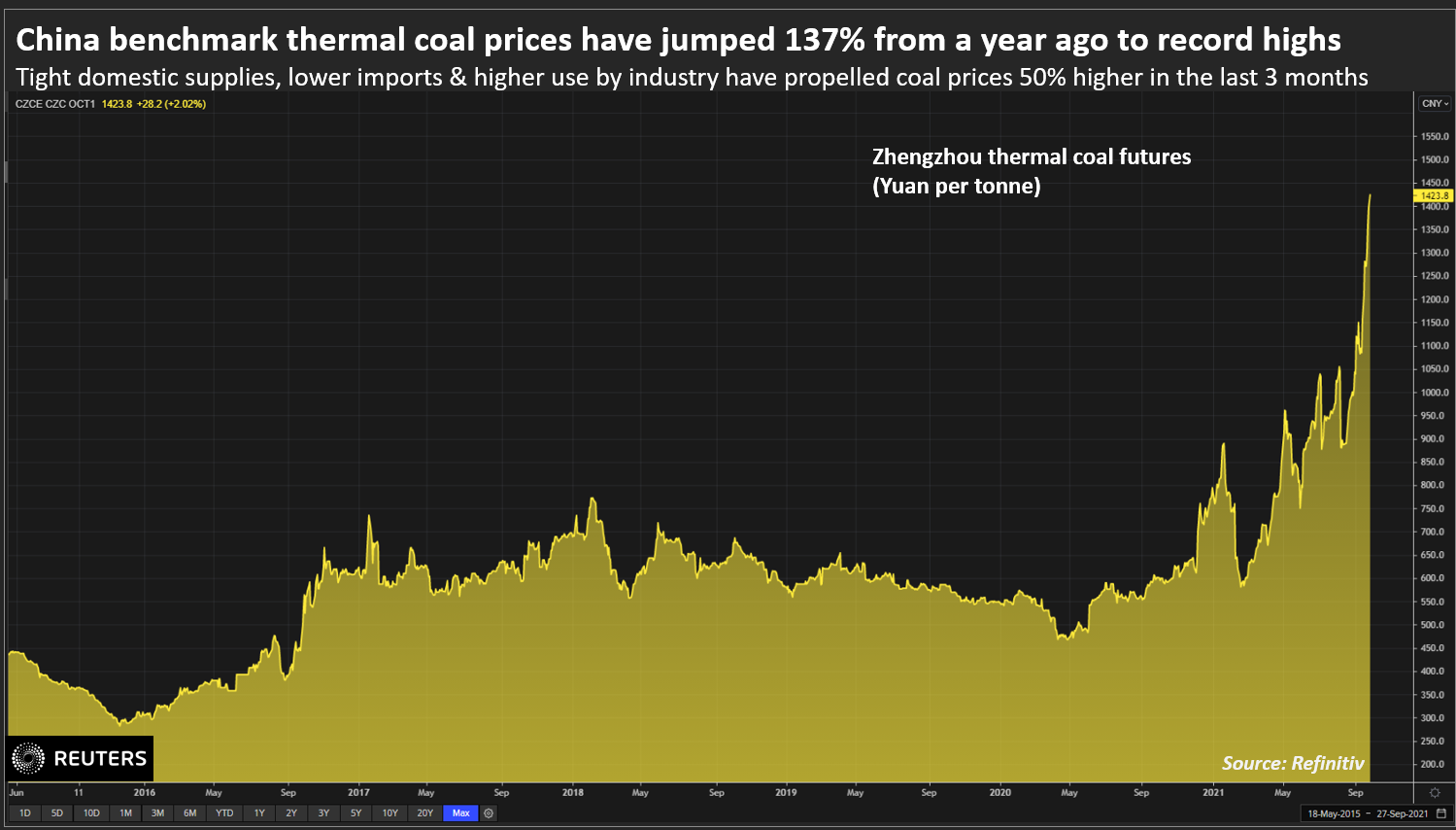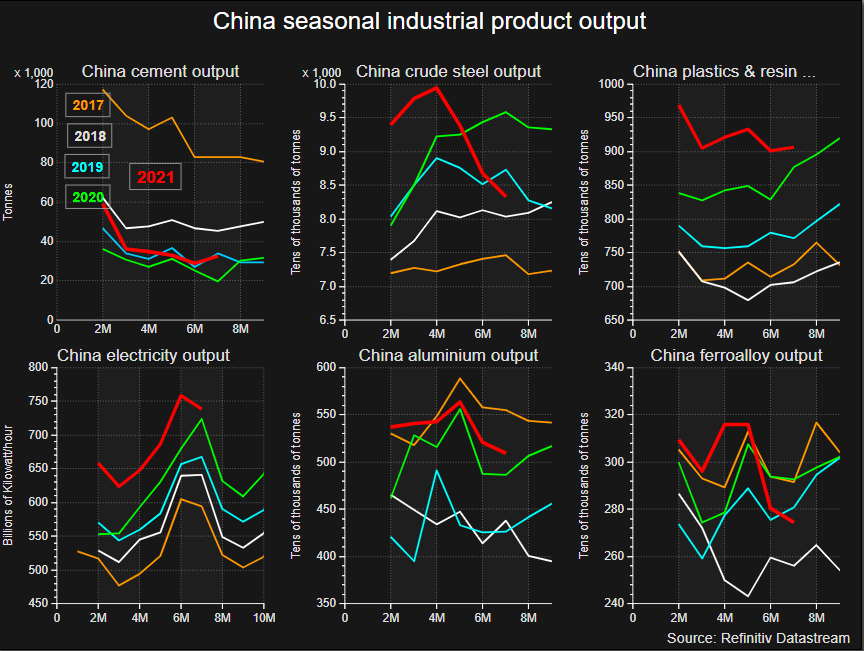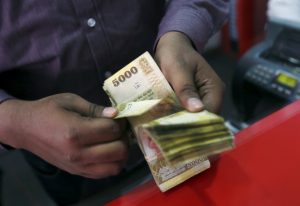China’s power crunch, caused by tight coal supplies and toughening emissions standards, has triggered a contraction in heavy industry across several regions and is dragging on the country’s economic growth rate, analysts said.
China has vowed to cut energy intensity by around 3% in 2021 to meet its climate goals and provincial authorities have stepped up the enforcement of emissions curbs in recent months after only 10 of 30 mainland regions managed to achieve their energy goals in the first half of the year.
Higher coal prices and tight supplies in a country that depends overwhelmingly on coal-fired power for its energy has also led to the power shortages ahead of the winter heating season.
“Power cuts have come as China’s carbon regulatory reset has collided with its industrial boom amid the pandemic,” Morgan Stanley analysts said in a note to clients on Monday.
“Production cuts, if prolonged, could knock 1 ppt (percentage point) off GDP growth in Q4, led by materials production.”

China’s economy saw a rapid recovery from the Covid-19 pandemic last year, but recent data have pointed to a slowdown in the world’s second-largest economy.
The steel, aluminium and cement industries have been hit by the output curbs with about 7% of aluminium production capacity suspended and 29% of national cement production affected, the Morgan Stanley analysts said, adding that paper and glass could be the next industries to face supply disruptions.

“The power-supply shock in the world’s second-biggest economy and biggest manufacturer will ripple through and impact global markets,” analysts at Nomura said in a research note to clients sent on September 24.
“The supply shocks have prompted us to further cut our year-on-year Q3 and Q4 GDP growth forecasts to 4.7% and 3.0%, respectively, from 5.1% and 4.4%,” the note added.
Nomura cut its 2021 gross domestic product (GDP) forecast to 7.7% from 8.2%. China has set its 2021 economic growth target at above 6%.
“The major reason for power cuts is coal supply shortage,” said a China-based analyst, noting that domestic coal output was restrained by tightening safety standards while imports from major exporter Indonesia had been slowed by bad weather. The analyst declined to be named as the person was not authorised to speak to the media.
China, the world’s biggest energy consumer and source of climate-warming greenhouse gas, has said it aims to bring carbon emissions to a peak by 2030 and to net zero by 2060.
SPILL OVER
The power pinch, which has been impacting manufacturers in key industrial hubs on the east and south coasts for the past several weeks, is now spilling over into the residential sector in parts of the northeast.
Liaoning province said its power generation had declined significantly since July, and the supply gap widened to a “severe level” last week due to falling electricity from other regions and declining wind power. It expanded power cuts from industrial firms to residential areas last week.
The city of Huludao in the province has asked residents to not use high-energy electronics like water heaters and microwaves during the peak power use periods from 10pm-12am, 3-4pm and 7-8pm.
A resident of Harbin city in the northeast Heilongjiang province said that many shopping malls were closing earlier than usual at 4pm.
The impact of the power shortages throughout the country has affected a wide range of businesses, from producers of aluminium and chemicals to dyes, furniture and soymeal.
“I believe the global markets will feel the pinch of a shortage of supply from textiles, toys to machine parts,” Nomura’s Lu Ting warned.
“The draconian measures in some key economic powerhouses like Jiangsu, Zhejiang and Guangdong provinces will very likely dent China’s official manufacturing PMI [output data], sending it further down to around 47.0 in September from 50.1 in August, as suggested by the continued weakening of high-frequency data.
“Even with these cuts, we see more downside risk to our forecasts. We expect markets to downwardly adjust their forecasts soon,” he said.
To try to alleviate the shortages, China’s National Energy Administration (NEA) has told coal and natural gas companies to increase output to ensure the country has sufficient energy supplies to keep homes warm during winter, the regulator said on Sunday.
Last week, major coal producers in China met to try and resolve supply shortages and curb price increases.
• Reuters with additional editing by Jim Pollard
























